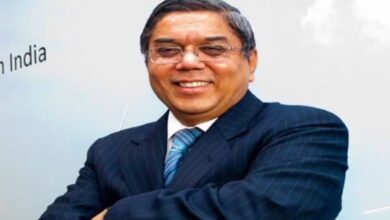India China Border Meeting Between Defence Minister Rajnath Singh And His Chinese Counterpart
After a meeting held on September 10, India and China agreed to cooperate with each other to help maintain peace and tranquility in the border. The meeting that took place in Moscow, was attended by Defence Minister Rajnath Singh and he was met with Wang Yi, the Defence Minister of China. Even after a 2 hour 20 minute long meeting there was no tangible breakthrough. The situation was not really resolved. The meeting amongst the Defence Minister was held after the standoff that took place on August 31st near Eastern Ladakh. Chinese troops violated protocol and made a provocative attack near Pangong Tso lake. This was the first event that triggered many events to come.
Deal Breaker:
After the face off, this was the first high level political meeting in a long time. Rajnath Singh blamed, People’s Liberation Army (PLA) for the incursion and also for breaking protocol. Rajnath Singh told Singh that they would not surrender even an inch of their place no matter what and would protect their territory at all costs. India was firm on this decision and they were sure that they wouldn’t budge for no one. But Wang Yi responded that India was solely responsible for this situation and that they were the ones that provoked China and caused escalation of the situation along the LAC (Line of Actual Control). India responded immediately to the Defence Minister of China’s accusations saying that China began their incursion by deploying huge amount of troops and their aggressive behaviour to alter “status quo” was in violation of their bilateral agreements.
Wang Yi after hearing this blamed it on India again and was affirmative that they would not alter positions or give up even the slightest part of its territory, similar to India. Both of the nations stood their ground and were firm on their decisions. Even though the resolving of this situation could’ve been more effective and substantial, both of the Defence Minister’s agreed that they will resolve the matter with diplomatic solutions and will de-escalate the situation as quickly as possible in a consensus between Prime Minister Narendra Modi and Chinese Prime Minister Xi Jinping for maintaining their peace and tranquility in the border. This served as a ray of hope to the armed forces on both sides.

Day Late Dollar Short:
The meeting was asked for by China, which was a first for both the sides since the border dispute plummeted in June with the massacre of almost 20 Indian soldiers. The Chinese forces also took a similar loss on their side. In a message, Defence Minister Rajnath Singh said that “there was a lack of peace and tranquility in the border and that China must co operate with India to maintain integrity, and non aggression in the borders” before his meeting with the Defence Minister of China. Still it didn’t do much good for both sides.
The Indian army said in an early statement this week that they had blocked Chinese troops
trying to carry out provocative attacks near Pangong Tso lake region in Ladakh, to alter “status quo”. This was the most serious event that took place after the previous border dispute in June where India suffered the loss of almost 20 Indian soldiers. China suffered a serious loss as well. The incursion was attempted even when both the nations were engaged in military talks to avoid further escalation of the situation which has so far been invain. This resulted in further escalation of the situation and there hasn’t been any proper resolution for these issues.

Water Under The Bridge:
Before this week’s incursion, China made a statement that it wanted to solve the remaining border issue between India in a peaceful manner using diplomatic solutions. However after several of these diplomatic meetings and military rounds, it has seemed to do very little and hasn’t stopped further escalation of this situation. Tensions at the border have increased between both the nations. This is the highest level of tension that India has seen since the war in 1962, with China ordering a major rise in tanks and defence system in Eastern Ladakh. India has also created an army formation of its own and is on high alert. It has deployed additional forces along the Line of Actual Control (LAC) and is ready to give out a counter attack if the necessary situation arrives.
Even after several warnings in the border dispute China made a statement that its armed forces including its military strength is even more stronger and effective than India’s armed forces. China has made some speculations in an editorial on its mouthpiece saying that, “even though India and China are both of great powers, in the situation of a war in a battlefield, India will lose. If there’s an outbreak of a border war India will have no chance of winning against China” it said in its mouthpiece Global Times. Their statement was snubbed by the Indian Defence Minister. Rajnath Singh made a statement that both sides will do their part in maintaining peace and tranquility in the border and to prevent any more incursions in the future.
The Chinese have also deployed heavy air activity along the LAC and have increased their air bases in Hotan and Ngari Gunsa in Tibet. MM Naravane, an army Chief General has said that the situation around the LAC has gotten tense, but it can be fully resolved and quickly de escalated through talks with the opponent before it gets any worse. General Bipin Rawat, the Chief of Defence Staff has said that, even after the coordinated attack this week along Eastern Ladakh,it has considered the possibility of China joining an alliance with Pakistan. “If China ever were to form an alliance with Pakistan in the days to come, India’s armed forces are more than prepared to face the threat and deal with it” said Rawat.




